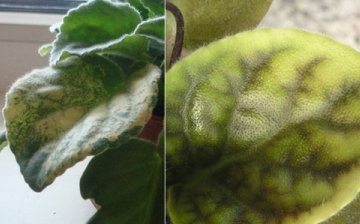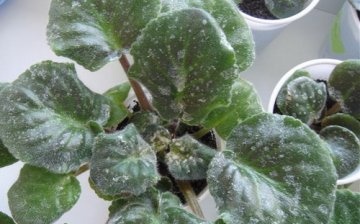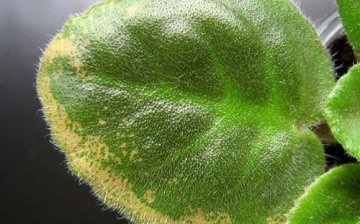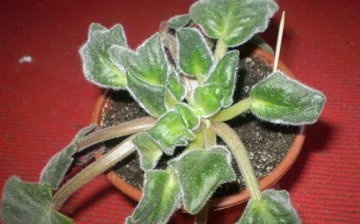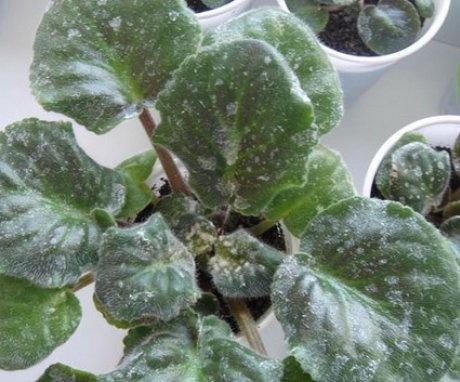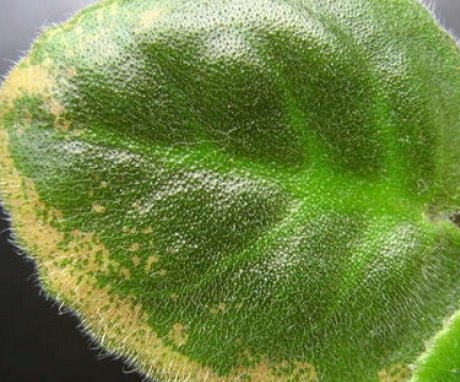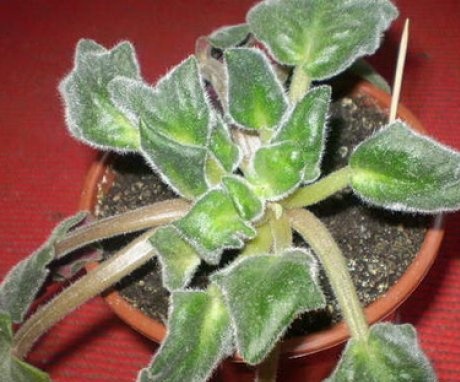Diseases of violets in pictures will help to deal with the disease
Violets are very delicate and vulnerable plants. So that they do not get sick, you need to provide good care for them, water and feed them on time. Violet diseases can be infectious and non-infectious. You can more clearly see the signs of diseases in the photo. Images make it possible to more accurately determine than violet sick.
Content:
- Signs of infectious diseases of violets
- Non-communicable diseases of violets and their causes
- Prevention of violet diseases
Signs of infectious diseases of violets
Signs of an infectious disease are reflected primarily in the appearance of the plant. The pictures show that the violets become faded, lethargic and stunted. Signs may indicate the appearance of the following infectious diseases:
- powdery mildew... This is a fungal disease that manifests itself as a white bloom on all parts of the plant;
- late blight, a fungal disease in which the roots and root collar are affected. The disease quickly spreads to all parts of the plant. Stems and leaves become covered with rusty spots, become lethargic and lose their elasticity. If help is not provided in time, the plant may die from this disease;
- gray mold. With this fungal disease, the violet rosette decays. The buds and flowers are covered with mold, similar to a cobweb or a cotton border, which eventually disappear completely.
At the first sign of the disease, infected violets are urgently isolated from healthy plants to prevent infection. If the disease has slightly touched the plant, you can free the violet from the substrate and plant it in a new mixture, having previously treated it with Fundazole or another dressing agent. Violet roots must be treated with any fungicide.
If you overlooked, and the infection has spread to most of the plant, then you can try to save the violet from death. For this, young and still healthy leaves are cut off, placed in water for rooting. This is the only way to preserve the variety. The remaining diseased plant along with soil destroyed, and the pots are thoroughly disinfected.
Non-communicable diseases of violets and their causes
Often, violets are exposed to non-infectious diseases. There can be many reasons for this. The most common signs of the disease can be:
- yellowing of leaves... This can happen for various reasons: waterlogging of the plant, exposure to the leaves of direct sunlight or from a lack of moisture in the air;
- lack of flowering. Violets can do not bloom due to lack of sunlight or if the room is cold and dry air;
- the appearance of brown spots on the leaves. Characteristic spots can appear if the violet is watered with cold water;
- pallor and curling of violet leaves. Most often this happens when the temperature regime is not observed, when the violets are cold and uncomfortable;
- the appearance of light yellow spots on the leaves. Spots can appear under the influence of a bright sun and with a sharp change in lighting, for example, a flower was transferred from a shelf to a windowsill, where the light is much brighter;
- falling of leaves, buds and flowers of violets. This is observed with a sharp change in the habitat, for example, a violet grew in a dry room, and was moved to a room with high humidity;
- loss of elasticity by leaves. Violet leaves soften and lose their shape when the plant overflows, when the roots begin to rot from an excess of moisture.
Avoiding many noncommunicable diseases will help the correct care for violets... First of all, it is necessary to provide the plant with the required temperature and watering regime. Violets grow and bloom favorably at a temperature of + 20-24 degrees. To water the plant, the water is heated at room temperature and defended. You need to try not to overflow the plants, they tolerate slight dryness better than waterlogging.
A place for violets is selected with good lighting, but with diffused sunlight. Some varieties like bright lighting, some like subdued light. If different varieties of violets are available, it is better to arrange them on special racks, creating the necessary conditions for each variety.
The humidity in the room should be increased, especially during the heating season. Sometimes, to increase the humidity, containers with water are placed next to the flowers or a humidifier is used.
Prevention of violet diseases
The best method of dealing with violet diseases is prevention.
Some measures will help prevent various diseases:
- When buying a new violet flower, isolate it from other plants for a while. Suddenly he is sick, but you did not notice it right away. When the flower adapts and does not show any signs of disease, you can "add" it to other plants without fear;
- constantly inspect your violets. If you find a plant with signs of disease among them, immediately isolate it. Quarantine him until he recovers;
- before planting a new plant, treat the soil with fungicides or potassium permanganate solution.
These simple rules will help protect your plants from many diseases. Violets will continue to delight you and cheer you up with their blooming appearance.



